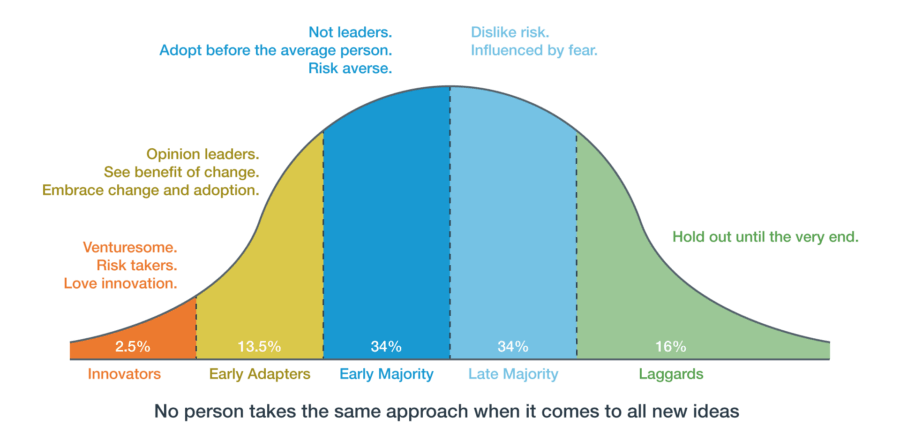
Not sure how your clients feel about AI? It’s time to find out.
Welcome to the age of Artificial Intelligence (AI), the next stage in the evolution of the Information Age. We will determine just how much control we’re willing to cede to machines during this stage. Some believe AI is a revolutionary tool that will improve our lives and productivity in our quest to become even more efficient. Others see AI as a threat that may end humankind following a fight to the end, survival of the fittest contest.
Many experts believe that AI has the potential to be greater than any innovation we’ve ever experienced. According to a July 25, 2022, article written for McKinsey by Niklas Berglind, Ankit Fadia, and Tom Isherwood, “The long-term potential of AI to change key aspects of the way we live and to support the operation of businesses, governments, and other organizations is hard to grasp.” All levels of government and most corporations are already integrating AI into their operations. Still, as is the case with every new technology, individuals will adopt the latest technology at a slower pace.
As an advisor comfortable with evolving technology, you may already be using AI to improve your productivity. The same probably isn’t true of your clients. When clients ask you how AI is affecting their accounts and the work you do for them, your work, ask additional questions to determine what they really want to know. Are they just curious, or could it be they’re concerned about AI technology which has, in some cases, been positioned as a dangerous innovation?
Figure 1 shows the time it took for some of the best-known technological advancements to be adopted by 100 million users. It’s astonishing to think that it took 75 years for the telephone to be adopted by just 100 people. Fortunately, we made up for it by swiftly embracing the mobile phone once we became reliant on the telephone. We did a better job when we had the opportunity to adapt to the telephone’s next generation, the cellular phone, in just 16 years.
ChatGPT, the AI language model was released in November of 2022 and became an instant success as demonstrated by the adoption of 100 million users in just 2 months. Although ChatGPT wasn’t the first AI language model or the first GPT (generative pre-trained transformer) available to the public, its user-friendly nature made it accessible to the broader population, not just the “computer nerds”.
Figure 1 – The Time it Took for 100 million Users to Adopt Innovation
Sources: Telephone: Boston Consulting 2015; Automobile: Streetsblog.org 2013; Mobile Phone, Internet, Facebook, UBER, TikTok: “X” World of Statistics 2023; ChatGPT: Visual Capitalist 2023
E.M. Rogers – Diffusion of Innovations Theory
The Diffusion of Innovations Theory was developed by Everett M. Rogers in 1962. In his book, “Diffusion of Innovations,” Rogers defined “diffusion” as, “the process in which an innovation is communicated through certain channels over time among the members of a social system.” Despite being 62 years old, Rogers’ theory has stood the test of time it continues to serve as a model for understanding how a new idea, product or service, is adopted by a population and help you understand how humans adopt innovations and provide you with additional insight on where your clients stand on the innovation adoption spectrum.
In his book, “Diffusion of Innovations (Fifth Edition)” Rogers defines innovation as “an idea, practice, or object that is perceived as new by an individual or other unit of adoption.” 1 While today we’re more likely to think of an innovation as complicated, scientific, and computer-related, that’s not the case. An innovation can be as simple as a new sweeping broom. In “Diffusion of Innovations,” Rogers uses the example of a farmer considering a new seed corn (Ryan and Gross 1943). Regardless of the innovation’s complexity, Rogers identified a five-step process we naturally follow as we move toward adopting an innovation:
- Knowledge
“Occurs when an individual (or other decision-making unit) is exposed to an innovations existence and gains an understanding of how it functions.” 2 - Persuasion
“Occurs when an individual (or other decision-making unit) forms a favorable or an unfavorable attitude towards the innovation.” 2 - Decision
“Takes place when an individual (or other decision-making unit) engages in activities that lead to a choice to adopt or reject the innovation.” 2 - Implementation
“Occurs when an individual (or other decision-making unit) puts a new idea into use.” 2 - Confirmation
“Takes place when an individual seeks reinforcement of the innovation-decision already made, but he or she may reverse this previous decision if exposed to conflicting messages about the innovation.” 2
How We Adopt Innovations
You may not have known Rogers by name, but you’ve probably seen the graph associated with his theory, Figure 2. In addition to providing us with information related to the way individuals adopt innovations, many companies use Rogers’ model to tailor different marketing messages to consumers within the various categories. The categories are:
Figure 2 – Diffusion of Innovation Theory

– Innovators 2.5%:
These individuals love innovation and take risk.
– Early Adopters 13.5%:
This group is made up of visible leaders who welcome and embrace change.
– Early Majority 34%:
These individuals are not leaders. They adopt before the average person, but they are
not risk takers.
– Late Majority 34%:
These individuals are skeptical of change. They dislike risk and are driven by fear.
– Laggards 16%:
This group will hold out until the very end.
According to those who study the adoption of technology, the financial services industry is adopting AI at breakneck speed. According to Forbes, “The symbiosis of AI and finance heralds a new era of precision, efficiency, and democratization in financial decision-making. As AI models become more sophisticated and integrated, the financial sector stands poised to become more resilient, inclusive, and insightful.” 4 As a financial advisor, your challenge is to ensure your clients understand how Artificial Intelligence will positively affect their lives and your relationship.
1 Rogers, Diffusion of Innovations, 5th ed. (2003), p12
2 Rogers, Diffusion of Innovations, 5th ed. (2003), p 168-218
3 Rogers, Diffusion of Innovations, 5th ed. (2003), page 281
4 Forbes Finance Council, “The Impact of Artificial Intelligence on Financial Decision
Making”, May 1, 2024.
Discover more about:
More Insights

Taiwan Semi, Tencent, and Other “Quality” Favorites

Investor Spotlight: The Municipal Bond Tax Exemption

International Equity: The Power of Global Diversification

Thornburg Income Builder Opportunities Trust Announces Distribution

A Time for Active Fixed Income
